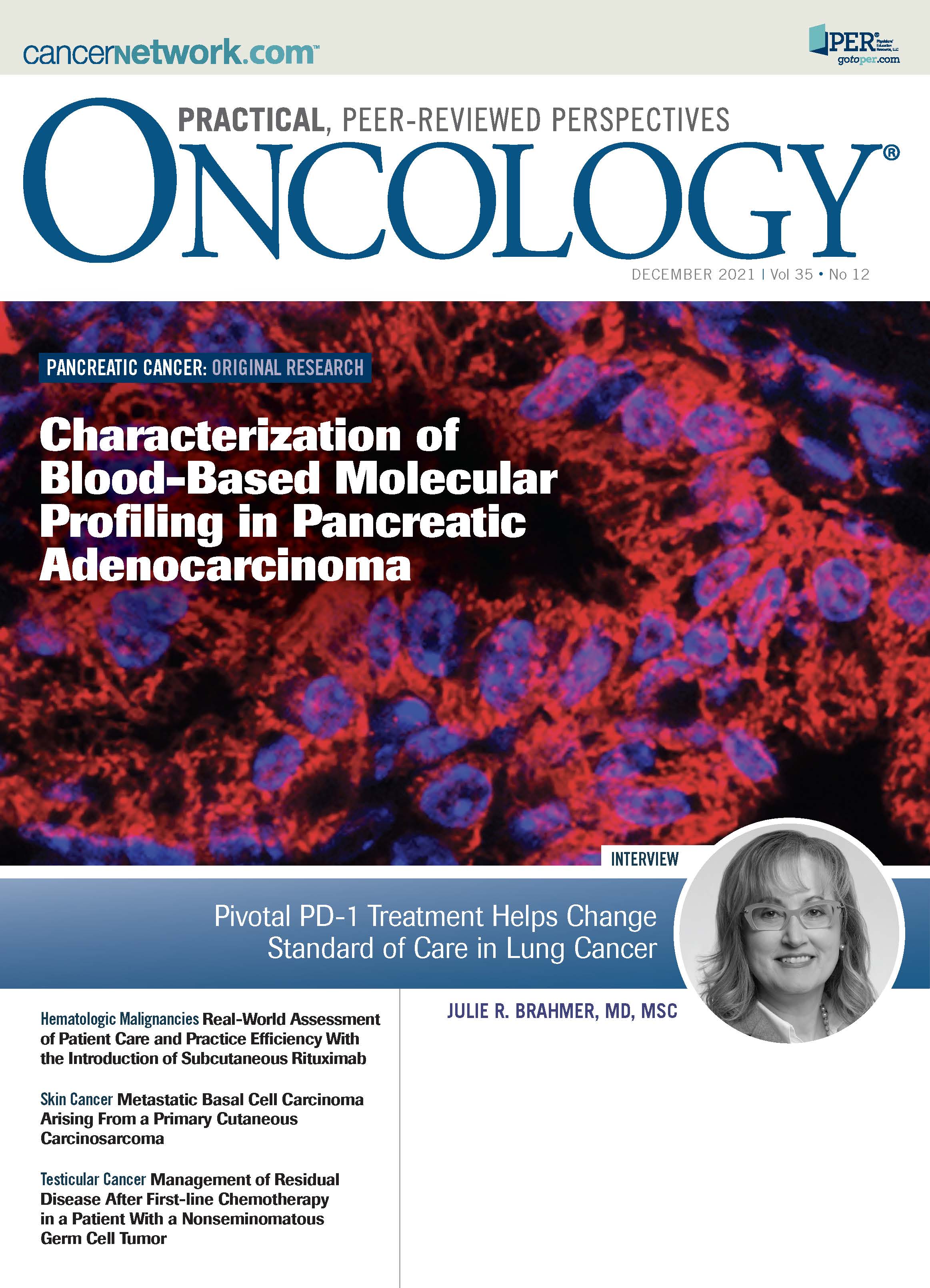Expert Commentary on the Product Profile of Loncastuximab Tesirine
In an interview with ONCOLOGY®, Keith Hecht, PharmD, offers a comprehensive review of real-world treatment considerations of loncastuximab tesirine as therapy for patients with diffuse large B-cell lymphoma.
Keith Hecht, PharmD
Southern Illinois University Edwardsville
School of Pharmacy
Edwardsville, IL

Oncology®: Can you briefly describe the mechanism of action of loncastuximab tesirine?
Hecht: Loncastuximab tesirine is a new therapy indicated for [patients with] large B-cell lymphoma that has progressed after 2 lines of therapy. It’s a monoclonal antibody conjugate, meaning it has a monoclonal antibody component with a chemotherapy piece that’s attached to it. The monoclonal antibody targets CD19, which is overexpressed on the B cells, especially in B-cell malignancies. Then, the chemotherapy component acts like an alkylating agent. The antibody serves as a carrier; it takes that chemotherapy straight to the malignant cell where the complex is internalized by the cell, and the alkylating agent is then cleaned so it can proceed to the DNA. At the DNA level, the alkylating agent component produces cytotoxic interstrand crosslinking. With these conjugated monoclonal antibodies, we have a targeted delivery of a chemotherapy agent.
Q: What are some of the biggest concerns with this agent in the real-world treatment setting?
Hecht: What we’re seeing in the real-world setting is what was reported in the LOTIS-2 trial.1 The biggest safety concerns are [related to] the development of edema and effusion, such as pleural effusions or potential cardiac effusions. There is also a concern for increased liver enzymes, especially gamma glutamyl transferase, and development of a rash. Importantly, [we should also look out for] myelosuppression. Often when we talk about monoclonal antibodies, we don’t consider myelosuppression, but because [this agent] has that chemotherapy conjugate, myelosuppression is an adverse effect [AE].
To help with the AEs, patients should get a 3-day course of dexamethasone; it [should] start the day before the antibody and continue for 2 days after. There are specific recommendations on how to handle the edema and fluid retention using spironolactone. If a patient gains as much as a kilogram, they should start spironolactone to help combat that fluid retention.
Q: Are dosing modifications common with this agent?
Hecht: Loncastuximab tesirine is dosed using an every-3-week schedule with a planned dose reduction. [The investigators on LOTIS-2] did that because in the in the phase 1 trial, they saw a response as soon as 6 weeks after the initiation of therapy. The starting dose is 150 μg/kg for the first 2 cycles, which covers 6 weeks. To help mitigate the AEs, the dose reduces to 75 μg/kg for subsequent cycles. Beyond that planned decrease, dose reductions in the LOTIS-2 trial and in the real-world [setting] aren’t that common. Dose delays during the course of therapy are sometimes required to allow for the resolution of AEs between cycles. Patients with a body mass index of 35 kg/m2 or higher should be dosed on an adjusted bodyweight schedule, and the formula for that is provided in the package insert and is included in the LOTIS-2 trial as well.2
Q: What are the major drug interactions?
Hecht: With a lot of monoclonal antibodies, we’re not reliant on many metabolic pathways to eliminate the drug. [Therefore], no known drug interactions have been identified with this agent so far.
Q: Have any barriers to administration or receipt by the patient emerged since this agent’s approval?
Hecht: With most of our new anticancer therapies, costs and reimbursements are always [a concern]. Most of our third-party carriers have adopted a prior authorization process to ensure that patients are only being offered loncastuximab tesirine for its approved indication, and a [certain] level of paperwork is involved in order to get the drug approved.
Q: Would you like to add anything else?
Hecht: I want to point out something from the LOTIS-2 trial that [led to this agent’s approval]. What really stood out is that included in the patient population were some patients with high-risk lymphoma features, such as double-or triple-hit lymphoma, or lymphoma that had transformed from a lower-grade to a higher-grade lymphoma. Just recently, at the International Conference on Malignant Lymphoma,3 [Pier Luigi Zinzani, MD, PhD, and colleagues] presented updates on these subgroups showing that they did as well as the general overall study population. The subgroups are small, but it’s encouraging to see patients with these high-risk lymphomas also deriving benefit, not just patients with standard-risk lymphomas.
Financial Disclosure: The authors have no significant financial interest in or other relationship with the manufacturer of any product or provider of any service mentioned in this article.
References
1. Caimi PF, Ai W, Alderuccio JP, et al. Loncastuximab tesirine in relapsed or refractory diffuse large B-cell lymphoma (LOTIS-2): a multicentre, open-label, single-arm, phase 2 trial. Lancet Oncol. 2021;22(6):790-800. doi:10.1016/S1470-2045(21)00139-X
2. Loncastuximab tesirine. Prescribing information. ADC Therapeutics; 2021. Accessed November 5, 2021. https://bit.ly/3qgAGtz
3. Zinzani PL, Caimi PF, Carlo-Stella C, et al. LOTIS 2 follow-up analysis: updated results from a phase 2 study of loncastuximab tesirine in relapsed or refractory diffuse large B-cell lymphoma. Hematol Oncol. 2021;39(suppl 2). doi.10.1002/hon.89_2880

Newsletter
Stay up to date on recent advances in the multidisciplinary approach to cancer.
Highlighting Insights From the Marginal Zone Lymphoma Workshop
Clinicians outline the significance of the MZL Workshop, where a gathering of international experts in the field discussed updates in the disease state.